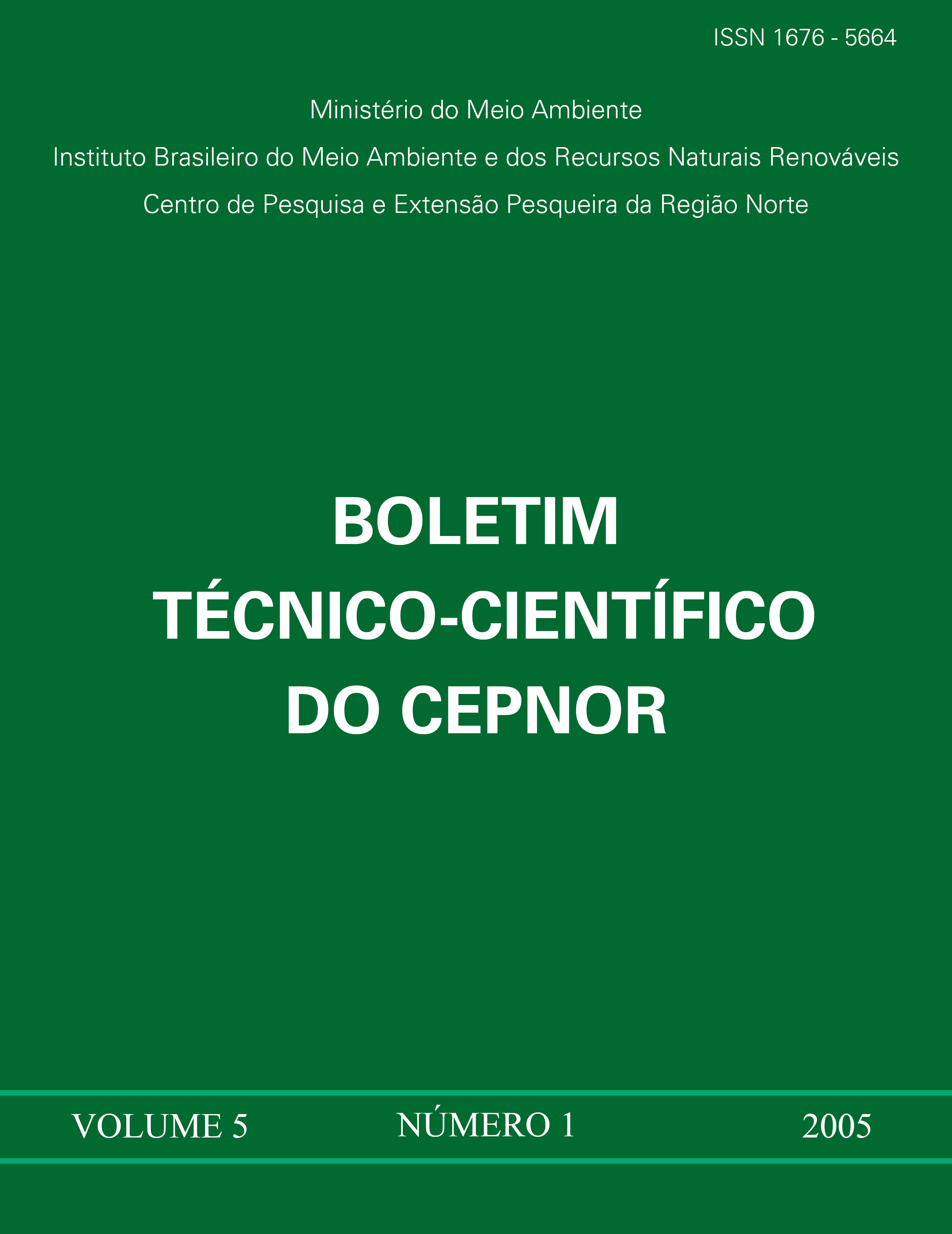1251 Aspectos Bioecológicos De Macrobrachium amazonicum (Heller, 1862) A Jusante Do Reservatório Da Hidrelétrica De Tucuruí – Pará
Palavras-chave:
Macrobrachium amazonicum, ecological aspects, sex-ratio, length at first sexual maturity, reproductive season, Tucuruí power plantResumo
This paper reports some bioecological aspects of Macrobrachium amazonicum
(Heller, 1862) caught downstream the dam of Tucuruí power plant, Pará State.
The samples were taken at Cametá county in the period from June, 2004 to May,
2005. At the Cepnor/Ibama Carcinology laboratory the specimens were identified,
sorted out by sex, measured and the morphologic and physiologic maturities ascertained. The pertinent performed analyses were: reproductive period,
gonadosomatic index and length at first sexual maturity. The species occurred in
all the samplings, even so it was more abundant during the rainy season. The
females were more abundant in a proportion of 1.2:1.0. The months with higher
percentages of females were October (85.9 %) and December (83.7 %), both on
the less rainy season, and January (67.9 %) on the rainy season. The highest
number of immature females occurred in the less rainy season (August) and in
June (rainy season); females in maturation were more frequent in June and July;
mature females were more abundant in May and August; and spent females in
January and October. The gonadosomatic mean index monthly variation indicates
April and October as the period of major reproductive activity (rainy season). The
average length at first sexual maturity was 4.75 cm in total length.





